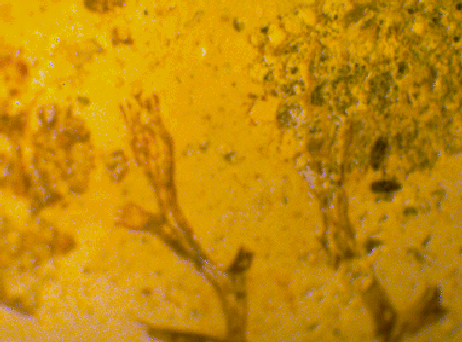



Hydrozoa: Fossil Record

Hydrozoans may date back to the Vendian (late Precambrian), but the fossil record of hydrozoans is scanty before the Cenozoic, starting about 65 million years ago. The oldest fossil milleporines and stylasterines — the "fire corals," so called from their stony growths that resemble those of true true corals — appeared in the Late Cretaceous and are moderately common as fossils in the Cenozoic. Other hydrozoan groups may secrete chitinous exoskeletons (periderm) that may occasionally be preserved as fossils. A rare fossil hydroid, Mississippidendrium from the Cretaceous of northeast Mississippi, is shown at the top of the page. Note the branches with thecae, or cups, on the ends, which would have surrounded the bases of the polyps in life. The chondrophorines, or "by-the-wind sailors," float by means of an internal chitinous float, which may occasionally be preserved as a fossil impression. The earliest chondrophorines may be Vendian forms like Eoporpita.
